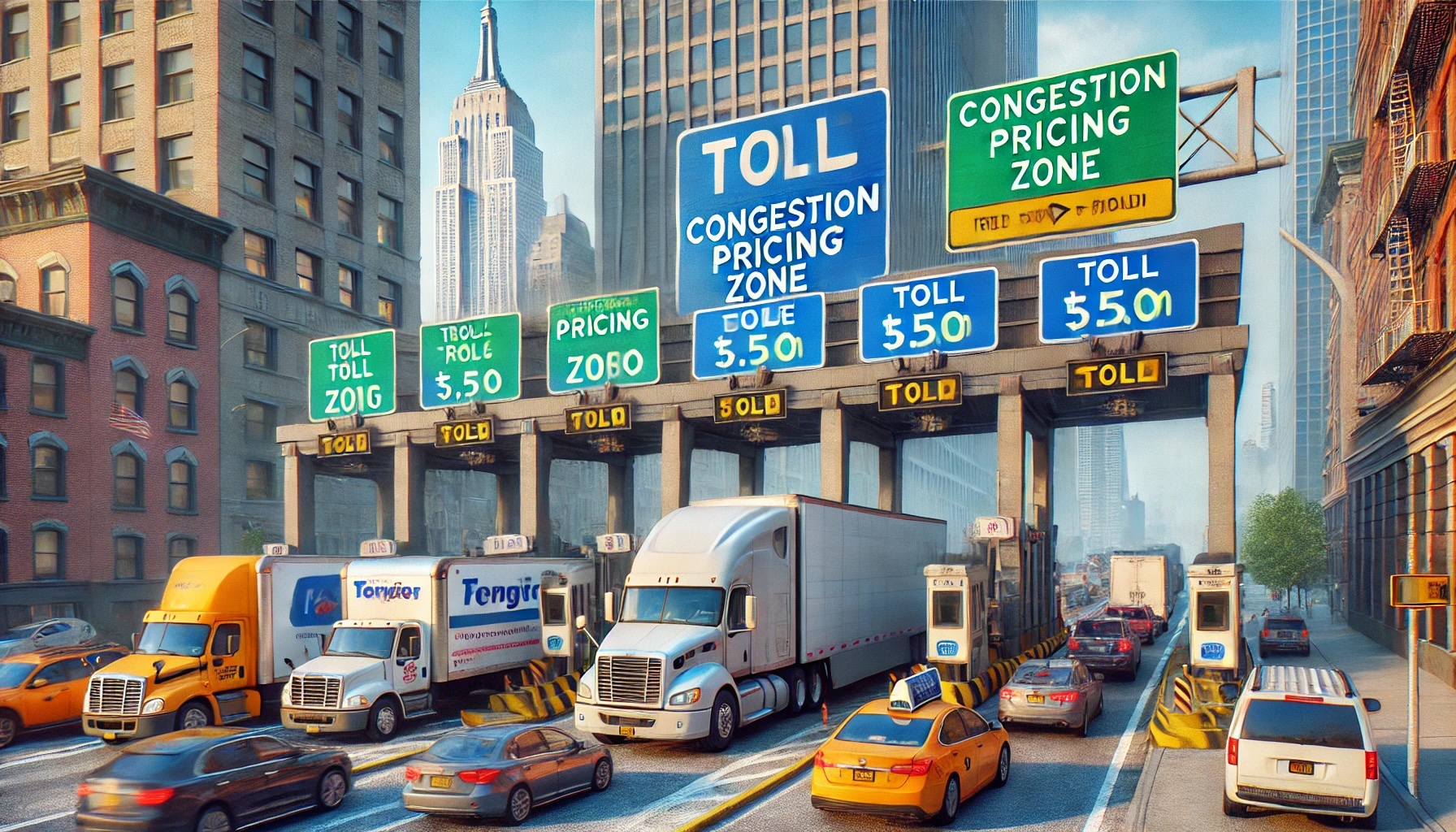- By - Joe Soliz
- January 8, 2025
- Comments (0)
New York City’s newly implemented congestion pricing program marks a historic shift in urban mobility, aiming to reduce traffic congestion and fund critical improvements to public transit. While the program targets reducing gridlock in Manhattan south of 60th Street, its impact on large trucks and commercial vehicles raises important questions about costs, operational efficiency, and long-term economic effects on the logistics and transportation sectors.
The Toll Breakdown for Commercial Vehicles
Under the new congestion pricing structure, large trucks (multi-unit trucks) face a peak-period toll of $21.60 and an overnight toll of $5.40. Smaller single-unit trucks and buses are charged $14.40 during peak hours and $3.60 overnight. The toll applies only once per day per vehicle, and crossing credits reduce the fees for vehicles entering via tolled crossings like the Lincoln or Holland Tunnels. For example, large trucks can receive up to a $12 credit during peak periods.
These charges represent a significant cost for businesses reliant on frequent access to Manhattan, where deliveries, construction, and service operations are vital to supporting the city’s economy.
Operational Challenges for Trucking and Logistics Companies
Increased Costs
The tolls add another layer of expenses for trucking and logistics companies already dealing with rising fuel costs, driver shortages, and inflationary pressures. For businesses operating large fleets, the cumulative daily tolls can escalate quickly, potentially affecting profitability and pricing structures for customers.Timing Constraints
The program incentivizes overnight deliveries by offering significantly lower toll rates during non-peak hours. While this could ease daytime congestion, it poses logistical challenges for businesses that operate on strict schedules or serve clients with daytime-only delivery windows.Diversion of Traffic
To avoid the toll zone, some drivers may choose to deliver to outer boroughs or park outside the city, increasing demand for parking facilities and creating new traffic bottlenecks. This diversion could complicate last-mile delivery logistics, adding inefficiencies to supply chains.
Balancing Costs with Benefits
Proponents argue that the tolls are necessary to address Manhattan’s chronic congestion issues, which often result in significant delays for commercial vehicles. According to the Metropolitan Transportation Authority (MTA), reduced gridlock could benefit truckers by improving travel times and lowering idling-related fuel consumption.
Additionally, the funds raised from the tolls—expected to reach billions over the coming years—will be directed toward upgrading New York’s public transit infrastructure, which indirectly benefits the logistics industry by reducing the number of cars on the road.
Impacts on Specific Sectors
Construction and Service Vehicles
Large trucks carrying construction materials, tools, or heavy equipment face some of the highest tolls. These costs may be passed down to developers, contractors, and, ultimately, property owners.Retail and Food Delivery
Businesses dependent on consistent inventory replenishment, such as grocery stores and restaurants, may see increased costs for goods transported into the city. Smaller operators, such as independent grocers, could feel a disproportionate impact compared to larger retailers.Freight and Logistics Companies
Long-haul freight companies entering the toll zone as part of their delivery routes may need to re-evaluate pricing strategies and seek efficiencies to offset the additional toll burden.
Looking Ahead: Adaptation and Mitigation Strategies
To navigate these challenges, trucking and logistics companies may consider several strategies:
Route Optimization
Leveraging route planning software to minimize time spent in toll zones during peak hours could reduce costs and improve delivery efficiency.Fleet Electrification
Electric trucks are increasingly exempt from tolls in congestion pricing models globally. While NYC has yet to announce specific exemptions for electric vehicles, transitioning to greener fleets could offer future cost-saving opportunities.Collaborative Solutions
Businesses might explore shared logistics hubs outside the toll zone, allowing for efficient consolidation of goods before delivery into Manhattan.
A Call for Stakeholder Collaboration
While the MTA acknowledges the potential benefits of reduced congestion, the logistics industry has called for further consideration of the toll’s impact on essential goods and services. Stakeholders, including trucking associations and commercial vehicle operators, have urged the city to evaluate the program’s economic effects and explore potential exemptions or discounts for critical sectors.
Conclusion
NYC’s congestion pricing program represents a bold effort to tackle gridlock and fund transit improvements, but its implications for large trucks and commercial vehicles highlight the complexity of balancing urban sustainability with economic realities. As the program unfolds, the ability of businesses to adapt and innovate will be critical to minimizing disruption while ensuring the efficient flow of goods that keeps New York City thriving.
